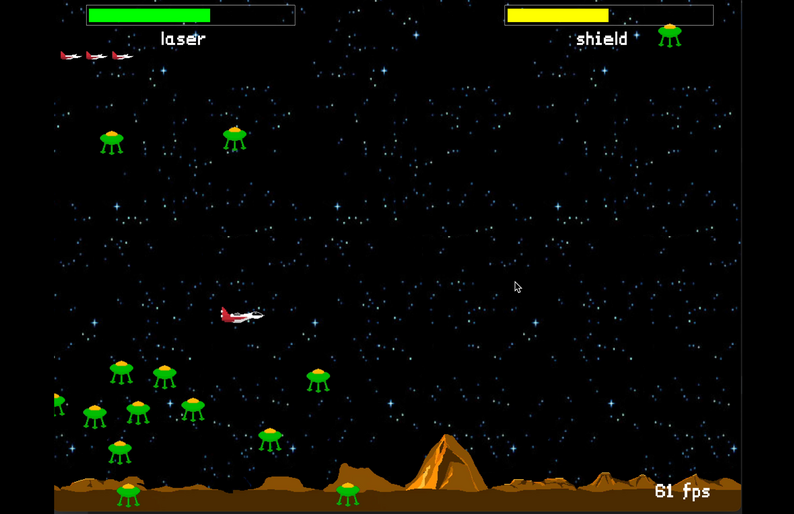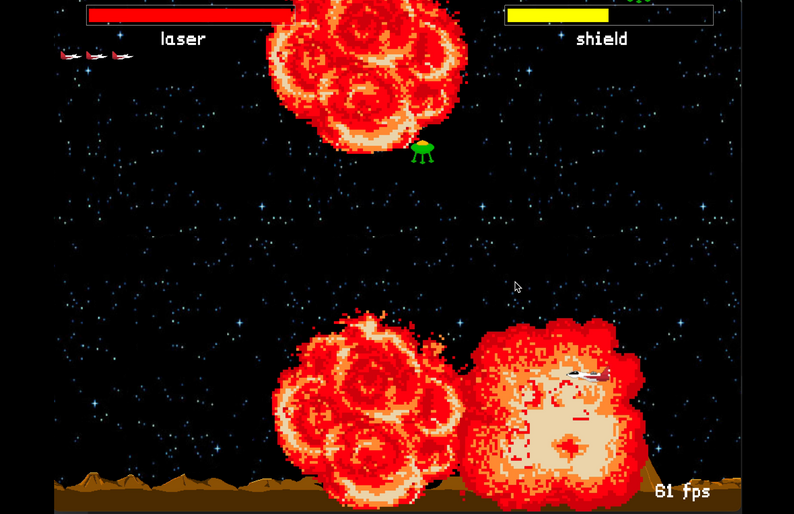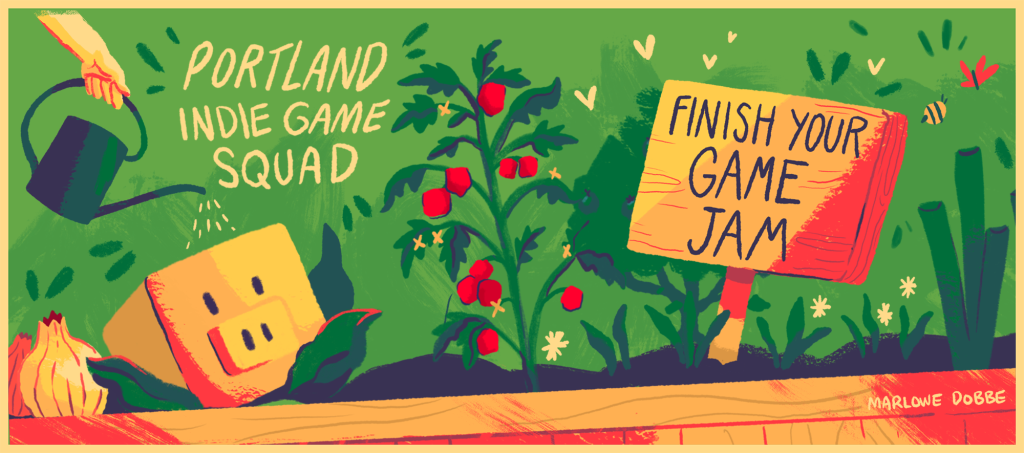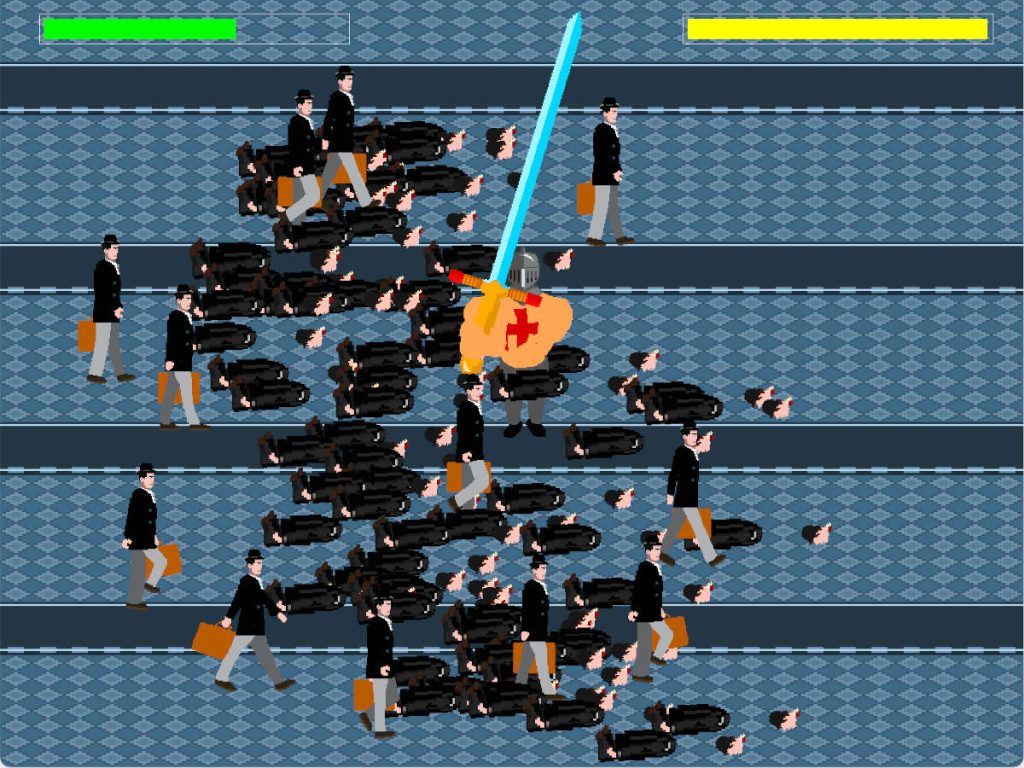Last week I participated in another Game Jam. This jam was not related to Libgdx but I could focus in my spare time on my entry. Time was really short (1 week). But… got something playable that shows promise for a future game.
The theme of the Jam is to win by losing. And that is quite a hard assignment.
The name of the game is Psirens and it is a 2D Defender style game.

The enemies are sometimes fleeing when you are shooting. The key to the game (that was the intention) is to overload your laser or shield or crash into the planet and then trigger a set of explosions. The blast radius will trigger a set of blast radii of the enemies that exploded due to the ship and those blast radii should lead to a cascade of explosions reaching other ships.
As in true Retro Arcade fashion… When you reach a certain score threshold you will be awarded another ship and you could continue your weird battle against the aliens.

Unfortunately I had 30 minutes left in the jam, so I had to wrap up quickly and the fun gameplay part needs to be refined in other types of Game Jams.
The prototype can be downloaded here :
https://pimpedpixel.itch.io/psirens
I have seen in the Jam schedule https://itch.io/jams that there is another Finish Game jam.

I might post attend this gamejam so I can finish the Gameplay and get feedback

